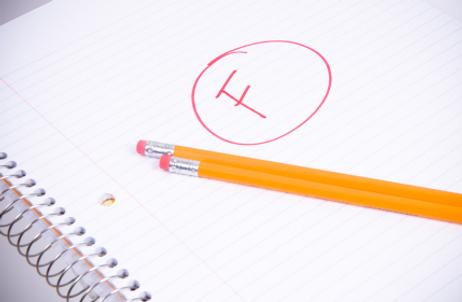The Obama administration had plans to overhaul the nation's education system when they took office, but budget battles, health care, and other priorities took center stage. Now, it appears that education will quickly be moving to the forefront as the current year's test scores from around the country show that the large majority of schools in the United States are missing their mark and headed for failure. With the No Child Left Behind Act created by the Bush administration now headed to the chopping block, the quality of education in this country is set to get another look by Congress this spring.
What is the No Child Left Behind Act?
According to a report at the Washington Post, the No Child Left Behind Act was a signature educational initiative that originated with President George W. Bush in 2001. The goal of the legislation, which received bipartisan support at the time of signing, was to require schools to bring 100 percent of their students to proficiency in math and reading by the year 2014. Proficiency would be evaluated through annual exams given to students in third through eighth grade and one additional test during high school.
This 2001 video shows President Bush promoting his "No Child Left Behind" act.
Reforming the No Child Left Behind Act has been a focus of the Obama administration because the current president would like to revamp the structure of the legislation to make it more appropriate to the current state of schools today. Part of the changes President Obama would like to make include loosening the accountability rules for schools that are performing well while cracking down harder on those that do not make the grade.
President Obama would also like to shift the purpose of the legislation beyond simply looking at test scores each year to actually monitoring the progress school is making toward producing more students who fall within math and reading guidelines.
The Bar is Raised
This year, No Child Left Behind will come to the forefront of the congressional agenda if the number of failing schools predicted by Education Secretary Arne Duncan is correct. According to an article in the New York Times, Duncan has told Congress that more than 80,000 of the nation's 100,000 public schools will receive failing grades this year under the act. The numbers are based on an analysis of testing trends and the current state of the act's pass-fail system used to rate schools.
This video explains the ESSA.
Duncan has proposed that the dire 82 percent of failing schools in the country is an indication that the No Child Left Behind Act is not working the way it was originally intended. According to the Los Angeles Times, Duncan told the House Committee on Education and the Workforce, "No Child Left Behind is broken and we need to fix it now. This law has created a thousand ways for schools to fail and very few ways to help them succeed. We should get out of the business of labeling schools as failures and create a new law that is fair and flexible, and focused on the schools and students most at risk."
Duncan is referring to the fact that No Child Left Behind is considered idealistic by the standards of many education experts today. It does not take into account the challenges of states that have diverse populations in terms of race and income level. The law also could demoralize schools with so many achieving a failing grade, which could, in turn, lower property values and misleads parents about the quality of education in their areas.
Schools Unable to Perform to Expectations
During the years since the No Child Left Behind Act was signed into law, schools have been failing to meet minimum requirements toward this goal in larger and larger numbers. During the 2006-2007 school year, 28 percent of schools failed to meet their proficiency goals. In the past academic year, that number rose to 37 percent. Some education officials were predicting that the law was nearing a tipping point, where the majority of schools would be unable to meet their goals, despite the hard work put in to do so.
This video from PBS reports on improvement in school results.
Still, the huge jump to 82 percent of schools for this academic year is a surprise. Some school officials and members of Congress have even expressed skepticism over the predictions. Jack Jennings, president of the Center on Education Policy, told Education Week, "I hope they're right. They're dealing with their credibility." He has asked the department to draft a technical paper explaining its calculations in more detail.
Others have been much quicker to criticize and question the data. Charles Barone, the director of federal legislation for Democrats for Education Reform, told Education Week that the number was highly misleading. Barone added, "I think they're going to regret this. While I understand their frustration in trying to pass the law, I think it's only going to hurt them. They're creating an atmosphere of fear."
The changes President Obama would like to see the No Child Education Act include a replacement of the 2014 proficiency deadline with a goal to have all students ready for college or the workforce by 2020. He would also like to shift the focus in problematic school districts to improvements in student performance rather than simply rating by test scores. However, schools that fall into the bottom five percent of the ranking system would still face the requirement to follow one of the Education Department's turnaround models to bring about the necessary improvements for the benefit of their students.
Questions? Contact us on Facebook. @publicschoolreview















